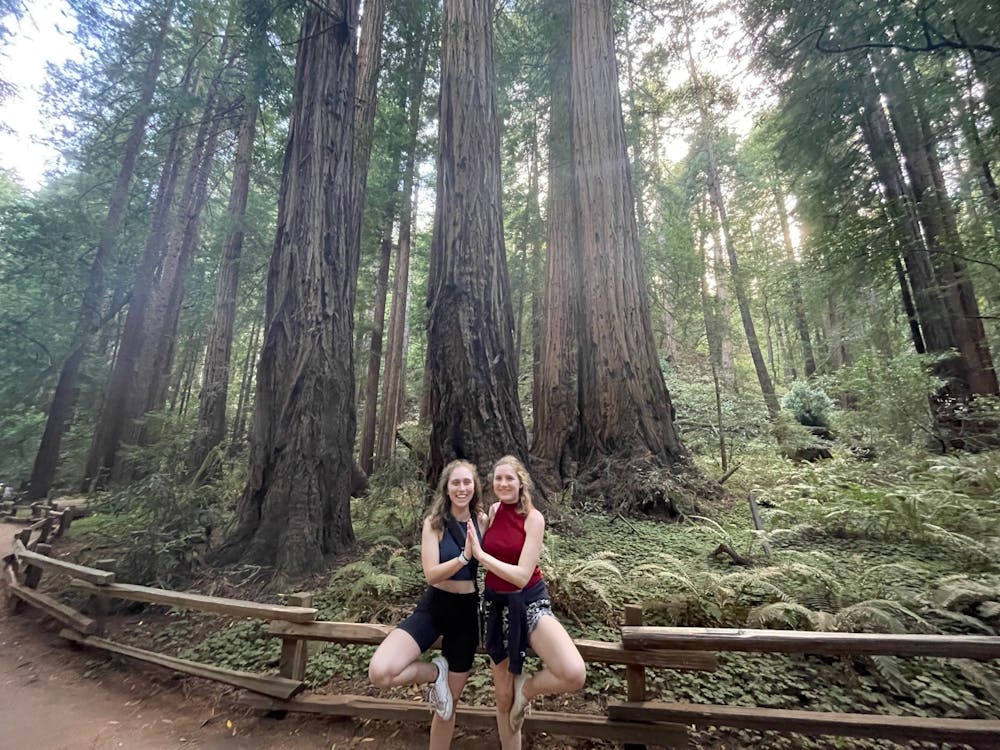When I found myself army-crawling my way through a tumultuous senior year of high school, I turned to yoga with the hope that it might offer me respite. In the sanctuary of those evenings I spent with YouTube videos and my mom’s hand-me-down mat, I could breathe and still my mind, leaving behind my daytime anxiety that often brought me to the brink of tears. What’s more, I was often invited to show myself love through those practices in a way I’d never been taught before. I learned how nourishing hugging my own legs to my chest feels and how glorious surrender in bālāsana (child’s pose) can be. Yoga got me through.
However, when the #BlackLivesMatter uprising of the summer of 2020 ignited conversations about racial justice and whiteness, I found South Asian folks talking about cultural appropriation on social media. For the first time, I realized that because white supremacy culture had normalized the world of white-washed yoga, I likely had been contributing to the cultural theft of a rich tradition I hadn’t taken the time to understand. It was time to do my homework.
Yoga at its core is an ancient spiritual tradition — organized, practiced and established in India. I want to pay tribute to my teachers from the Indian diaspora and all of the practitioners of yoga who held and passed on their somatic and spiritual knowledge. I want to honor Susanna Barkataki and Anjali Rao, the teachers of my 200-hour Yoga Teacher Training (YTT) and the facilitators of my spiritual journey through the ancient practice of yoga. I would also like to honor their teachers and their teachers’ teachers, without whom so many could not have even grazed the depths of this practice.
When I started practicing yoga regularly, I didn’t know what a spiritual lineage acknowledgment was. I didn’t even have a clear enough perception of my own whiteness to ask a question about the cultural lineage of yoga. For my younger self, like for so many others here in the West, yoga was a physical and mental practice used to tone the body and focus the mind, perhaps for therapeutic purposes. There was no discussion of its Indian and spiritual roots.
I won’t belabor the problems with cultural appropriation in yoga, since so many South Asian practitioners and teachers have educational resources that are readily available online. Everything I know is from them, so I’d encourage you to start with Susanna’s Instagram page @SusannaBarkataki and go from there. It was through her work that I knew I needed to learn more, regardless of whether or not I ever wanted to teach, and I knew her YTT would be exactly what I needed to hold myself accountable throughout my educational and spiritual journey.
Through this virtual YTT, I met dozens of brilliant students from around the world and learned from our weekly cohort leaders Anjali Rao and M Camellia and guest speakers like Melissa Shah, Tejal Petal and Jacoby Ballard whose groundbreaking work is changing what we think of as “yoga” or a “yoga practice,” a bit more every day. Melissa taught me how to use the principles of yoga to fight for social justice in and beyond the studio. Tejal unveiled the insidiousness of perfectionism and how it intersects with yogic philosophy and practice. I learned from Jacoby about making yoga accessible to people of all genders and how he sees yoga intersecting with queerness. M helped broaden my understanding of yoga āsana (the postures of yoga that Westerners often conflate to be the entirety of the practice of yoga), grounding me in the truth that the “fullest extension of the posture” is never how far you can reach but rather how much you let the posture move the life force within you. And, of course, there were Susanna and Anjali who opened my eyes from the beginning and continued to steep me in the tradition a bit more every session.
As I mentioned before, yoga is not simply āsana or a sequence of postures like downward dog and child’s pose. Susanna and Anjali taught me Aṣṭāṅga yoga, which means “eight-limbed path.” Āsana poses only represent a fraction of yoga as a whole; there are also the yamas (outer, ethical codes), niyamas (inner codes for personal transformation), prānāyāma (breathwork), pratyāhāra (focus), dhāraṇā (mindfulness), dhyāna (meditation) and samādhi (bliss). Through my education at the YTT, I fell in love with a whole world of wisdom that could move me beyond the brink of tears — to the safety of acceptance, nonviolence and peace. Though I hardly feel enlightened, when I look back at the girl staving off tears at the foot of her mat all those years ago, I look back with compassion and pity. If only she had had access to all of the tools and wisdom that I do today.
I suppose the most important thing I learned was the meaning of the word “yoga.” It comes from the Sanskrit word root yuj, meaning “to yoke, to unite.” While my instructors taught me about the yogic philosophy behind oneness and unity, it was my peers who showed me what yoga was. Yoga was my peer holding us accountable when white supremacy culture infiltrated the space. Yoga was another peer fighting for Iranian women and the LGBTQ+ community under attack from a violent regime. Yoga was another peer offering space and gentle silence for our collective pain. They lived by the yamas and niyamas and changed our lives in ways that transcended individualized yogic practices.
I signed up to teach yoga here at Middlebury because although I’ve only just begun the learning process, I believe the Middlebury community deserves to know the truth about yoga, one that is so often hidden behind Lululemon leggings and pilates-toned bodies. Yoga is not designed for the solitude of one’s bedroom, though it can be the safe space we often need to get started, as it was for me. I believe the true richness of the practice begins in community, and in unity. Therefore, despite the mistakes I’ll make and the things I have yet to learn, I believe I owe it to Susanna, Anjali and my YTT peers to share my practice with Middlebury, where collectively, we can hold each other in oneness and move beyond appropriation together.




